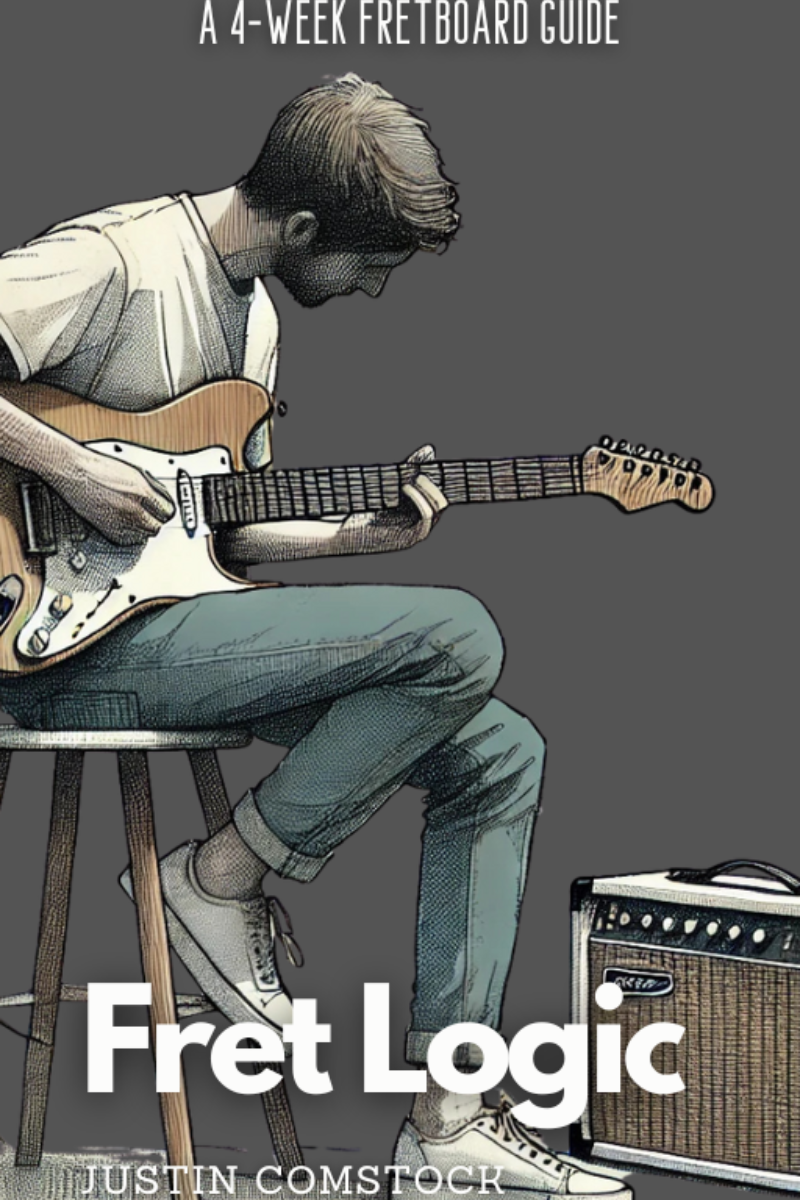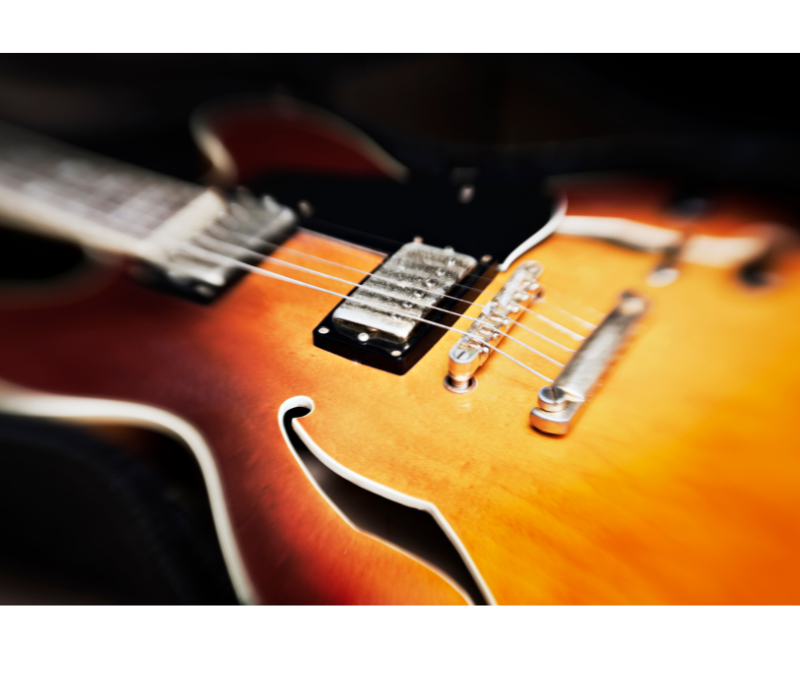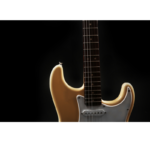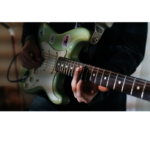If you’ve ever felt stuck in the same pentatonic box or wondered how pros like Santana, Jerry Garcia, or Robben Ford make their solos sound so expressive—it’s time you explored guitar modes. Modes are the secret sauce of expressive guitar soloing, chord flavoring, and creative composition. And most players skip them completely.
But not you.
In this post, I’ll break down the seven essential modes, teach you how to practice them like a pro, and show you how to actually use them in your music. And if you want to go deeper, I’ve got two resources for you:
Let’s dive in.

❌ Stop Guessing. Start Shredding.
If you’re still fumbling through scale patterns and box shapes… it’s costing you progress.
FretDeck™ is the no-fluff system that shows you exactly how to master the fretboard—fast. Early access.
⚡️ This isn’t for dabblers. It’s for players who want results.
👉 Click here to join the pre-launch now
Early access. Limited rewards. Don’t wait.
🎼 What Are Guitar Modes, Really?
Here’s the thing most people miss: modes aren’t just scales—they’re perspectives. Each mode is a new way of looking at the same set of notes, shifting the emotional center of gravity.
All seven modes are derived from the major scale (a.k.a. the Ionian mode). But when you start the scale from a different note—say, the second or third—you get a mode with a completely different vibe.
Here’s a quick breakdown:
| Mode | Interval Formula | Mood / Vibe |
|---|---|---|
| Ionian | 1 – 2 – 3 – 4 – 5 – 6 – 7 | Bright, happy (Major) |
| Dorian | 1 – 2 – ♭3 – 4 – 5 – 6 – ♭7 | Funky, jazzy, hopeful |
| Phrygian | 1 – ♭2 – ♭3 – 4 – 5 – ♭6 – ♭7 | Dark, exotic |
| Lydian | 1 – 2 – 3 – ♯4 – 5 – 6 – 7 | Dreamy, floating |
| Mixolydian | 1 – 2 – 3 – 4 – 5 – 6 – ♭7 | Bluesy, classic rock feel |
| Aeolian | 1 – 2 – ♭3 – 4 – 5 – ♭6 – ♭7 | Melancholy, natural minor |
| Locrian | 1 – ♭2 – ♭3 – 4 – ♭5 – ♭6 – ♭7 | Tense, unstable |
🧠 Pro Tip: Modes are all about context. It’s not the notes—it’s the home base. You can play the exact same notes and get seven different moods depending on where you start.
🔁 Practice Strategies for Guitar Modes
Mastering modes isn’t about cramming 7 scale shapes into your brain. It’s about internalizing how they sound and feel on the fretboard.
Here’s how to do it:
1. One String Modal Mastery
Strip away complexity. Play one mode on a single string—no shapes, no shortcuts. Just your ear and fingerboard awareness.
Try this: Play E Dorian on the low E string:
E - F♯ - G - A - B - C♯ - D - E
Listen closely. Feel the mood.
🎯 Why it works: It develops interval awareness and helps you connect sound to spacing.
2. 3 Notes Per String = Modal Jet Fuel
This is the most efficient way to blaze across the neck. The 3NPS (three-notes-per-string) system gives you symmetrical patterns—ideal for speed, shredding, and modal freedom.
Example: G Mixolydian
Play it from the 3rd fret, using three notes per string—no diagonals, no wasted motion.
🧠 Bonus: All FretDeck modal cards are based on 3NPS shapes. Grab the deck to keep these right in your practice space.
3. Shape Linking & Modal Transitions
Modes are neighbors.
- Ionian and Dorian share 6/7 notes.
- Dorian and Aeolian overlap heavily.
- Lydian and Ionian are nearly identical except for that sharp 4.
Exercise: Play C Ionian into D Dorian without shifting your fretboard hand. Feel the contrast in mood, despite similar shapes.
🎸 Applying Guitar Modes to Real Music
Let’s get out of the practice room and into real music. Modes aren’t academic—they’re sonic storytelling tools.
1. Match the Mood
Don’t just run modes over chords. Use them to shape feeling.
| Mode | Chord to Use It Over | Great For… |
|---|---|---|
| Ionian | Major | Ballads, folk, pop |
| Dorian | Minor 7 | Funk, fusion, modern jazz |
| Phrygian | Minor | Metal, flamenco |
| Lydian | Major | Film scores, fusion |
| Mixolydian | Dominant 7 | Blues, rock, country licks |
| Aeolian | Minor | Metal, alternative rock |
| Locrian | Half-diminished (m7♭5) | Jazz tension, exotic fusion |
🎧 Try soloing in A Dorian over an Am7 – D9 vamp. That 6th (F♯) gives you instant Santana vibes.
2. Use Modal Backing Tracks
Practicing modes in isolation is like learning vocabulary without having a conversation.
Go on YouTube. Search for “Dorian backing track” or “Mixolydian groove.”
Improvise. Listen. Experiment.
🎯 Goal: Let your ears guide you. Don’t force licks—find the vibe.
3. Superimpose Modes Over Progressions
Here’s a trick pro players use: layering modes over chords that aren’t strictly “modal.”
Over Cmaj7, try:
- C Ionian (default)
- C Lydian (dreamy)
- C Mixolydian (blues-infused)
This “superimposing” adds color, tension, and sophistication.
🧠 Pro Move: Over a Bm7, play D major = B Dorian. You’re now modal without shifting positions!
🃏 Get the FretDeck Kickstarter – Modal Mastery in Your Hands
If you want to make modes click, I’ve created a tool that I wish I had years ago.
🎸 FretDeck: Pentatonic + Modal Mastery Cards
✔ 60 beautifully illustrated guitar scale cards
✔ Modal positions in every key
✔ Easy-to-understand visuals
✔ Designed for guitar players who learn by doing
⏳ Back now on Kickstarter before the campaign ends!
You’ll get early bird pricing + exclusive access to our Modal Workshop Series on Discord.

❌ Stop Guessing. Start Shredding.
If you’re still fumbling through scale patterns and box shapes… it’s costing you progress.
FretDeck™ is the no-fluff system that shows you exactly how to master the fretboard—fast. Early access.
⚡️ This isn’t for dabblers. It’s for players who want results.
👉 Click here to join the pre-launch now
Early access. Limited rewards. Don’t wait.
🔥 Join Our Discord: Guitar Freaks Hangout
We’re not just a community—we’re a lab for guitar exploration.
When you join, you get:
- Weekly challenges on modes and improvisation
- Peer feedback on your solos
- Live Q&As and jam threads
- Bonus PDF: “7 Modal Riffs for Instant Inspiration”
👉 Join the Guitar Freaks Hangout Here

Join Guitar Freaks Hangout on Discord! 🎸
Get Fret Logic FREE!
Join the Guitar Freaks Hangout Discord and get exclusive access to my entire e-book, Fret Logic! Master the fretboard and elevate your solos with this comprehensive guide.
👉 Don’t miss out—join now and download your free copy!
🧭 Your Modal Practice Plan (Week-by-Week)
| Week | Focus Mode | Backing Track Key | Practice Focus |
|---|---|---|---|
| 1 | Dorian | Dm7 | 3NPS + modal licks |
| 2 | Mixolydian | G7 | Major pentatonic fusion |
| 3 | Lydian | Cmaj7 | Dreamy arpeggios + modal shifts |
| 4 | Phrygian | Em | Tension, exotic phrasing |
| 5 | Aeolian | Am | Melodic minor blending |
| 6 | Ionian | G | Major melodies + triad targeting |
Download the schedule, track your riffs, and upload a solo each week to the Discord thread!
🎤 Final Word: Why Guitar Modes Matter
You can noodle in pentatonic boxes forever—or you can unlock the true language of the fretboard.
Guitar modes are the bridge between theory and emotion, between scale diagrams and the sound in your head. You don’t need to learn all 7 modes in a day. Start with one. Internalize the feeling. Then move on.
And when you’re ready to unlock the fretboard like never before?
👉 Back the FretDeck Kickstarter
👉 Join our Modal Community on Discord
Let’s make music that says something.
—
Internal Link:
Read next → 👉 Want to connect scales and chords like a pro? Check out Guitar Triads: The Secret to Unlocking the Neck to master triads and learn how they interact with modal shapes.
Outbound Link:
Learn modal improv from masters at TrueFire’s Modal Guitar Lessons
Would you like a Pinterest image or Instagram promo post for this blog next?










